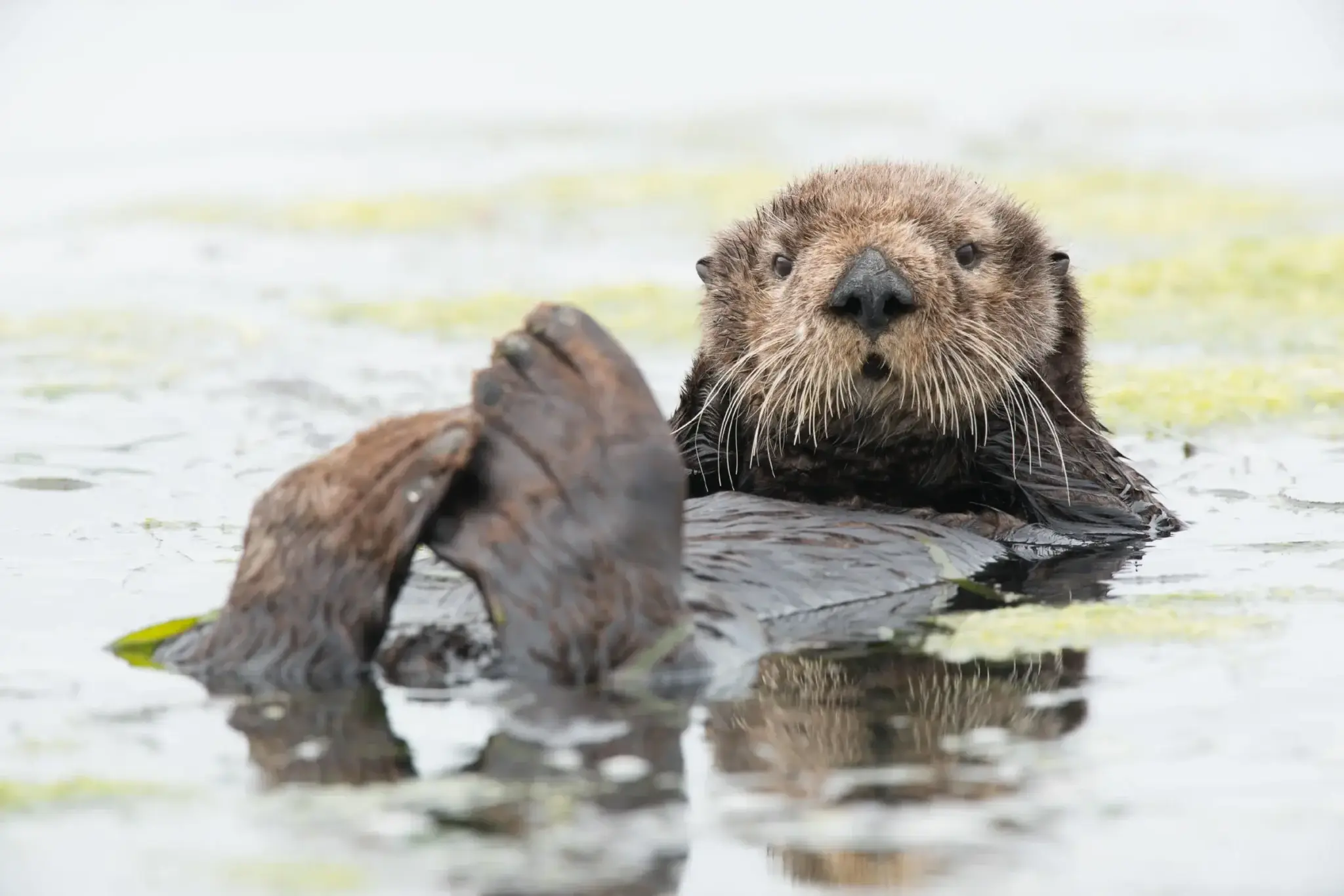About Sea Otters:
- It is an aquatic member of the weasel family, found along the coasts of the Pacific Ocean in North America and Asia.
- Habitat: It spends most of its time in the water but, in some locations, comes ashore to sleep or rest.
- Appearance: Sea otters have webbed feet, water-repellent fur to keep them dry and warm, and nostrils and ears that close in the water.
- They generally eat food equal to about a quarter of their body weight daily as they prowl kelp forests and seagrass beds.
- Ecological significance
- It’s a keystone species, which means that the health of sea otters is a good indication of the health of other species and ecosystems nearby.
- It plays a crucial role in maintaining the balance of marine ecosystems. By preying on sea urchins, they help control the population of these spiny creatures.
- Without otters, sea urchins can overpopulate and decimate kelp forests. These kelp forests are vital habitats for a myriad of marine life, offering shelter and food for numerous species.
- The presence of sea otters helps sustain the biodiversity and health of these underwater forests.
- Conservation status
IUCN Red List: Endangered
Q1: What are keystone species?
It is an organism that helps define an entire ecosystem. Without its keystone species, the ecosystem would be dramatically different or cease to exist altogether. Keystone species have low functional redundancy.
Source: Sea otters get more prey and reduce tooth damage using tools
Last updated on November, 2025
→ Check out the latest UPSC Syllabus 2026 here.
→ Join Vajiram & Ravi’s Interview Guidance Programme for expert help to crack your final UPSC stage.
→ UPSC Mains Result 2025 is now out.
→ UPSC Notification 2026 is scheduled to be released on January 14, 2026.
→ UPSC Calendar 2026 is released on 15th May, 2025.
→ The UPSC Vacancy 2025 were released 1129, out of which 979 were for UPSC CSE and remaining 150 are for UPSC IFoS.
→ UPSC Prelims 2026 will be conducted on 24th May, 2026 & UPSC Mains 2026 will be conducted on 21st August 2026.
→ The UPSC Selection Process is of 3 stages-Prelims, Mains and Interview.
→ UPSC Result 2024 is released with latest UPSC Marksheet 2024. Check Now!
→ UPSC Prelims Result 2025 is out now for the CSE held on 25 May 2025.
→ UPSC Toppers List 2024 is released now. Shakti Dubey is UPSC AIR 1 2024 Topper.
→ UPSC Prelims Question Paper 2025 and Unofficial Prelims Answer Key 2025 are available now.
→ UPSC Mains Question Paper 2025 is out for Essay, GS 1, 2, 3 & GS 4.
→ UPSC Mains Indian Language Question Paper 2025 is now out.
→ UPSC Mains Optional Question Paper 2025 is now out.
→ Also check Best IAS Coaching in Delhi

















